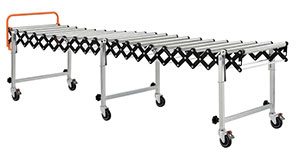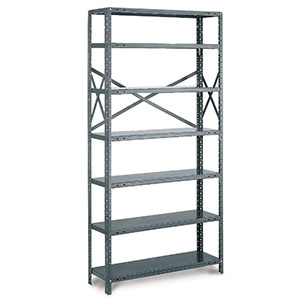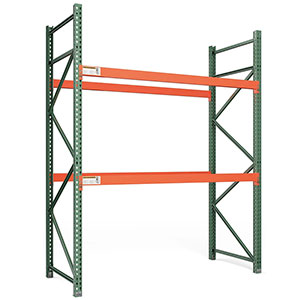Key Takeaways – Cross-docking vs. Conventional Warehousing
- A cross-docking warehouse reduces storage costs whilst speeding up delivery times, BUT it demands precise coordination and steady demand.
- Conventional warehousing offers flexibility and control, which makes it ideal for both bulk items and unpredictable inventory.
- Hybrid approaches are on the rise, especially among e-commerce and retail companies.
- Material handling equipment is crucial, no matter which warehouse optimization tools you choose.
- The cross-docking services market alone is projected to hit $6.27 billion in 2025, growing at 6% CAGR (Compound Annual Growth Rate) through 2032.
If you’re in the warehousing management business, you’ll know the industry is changing at a rapid-fire rate. And as a consequence, supply chains are racing to keep up. They need to move faster, cut waste and inefficiency, and do it while negotiating increasing costs and decreasing spaces.
Now for years, most businesses have relied on the tried-and-true warehouse approach: inventory comes in, it sits on the shelves, and gets picked when the orders roll in. Simple enough.
But all that changed with the explosion of e-commerce. In a world of instant gratification, everyone wants their packages yesterday. And it’s left warehouse managers scratching their heads and going back to the drawing board, trying to figure out the latest warehouse space optimization techniques in this new environment. That’s where a cross-docking warehouse comes in.
So, What Exactly Is Cross-Docking?
Picture this. A truck pulls up to the warehouse loaded with your inventory. Workers proceed to unload it, but instead of stacking it on shelves as usual, they wheel it straight across the dock to another truck that's ready to head out. Cross-dock logistics bypasses long-term storage, with products no longer getting dusty on shelves.
In essence, it's like turning your warehouse into a high-speed relay station instead of a storage locker. Or if you’re a NASCAR fan, a pit stop. Come in, a quick transfer happens, and back out again. And that leads to:
Reduced Costs
- Lower warehousing costs: Less need for storage space cuts rent and overhead.
- Reduced inventory costs: Goods spend less time sitting, lowering holding costs.
- Lower transportation costs: Shipment consolidation enables more full-truckloads at lower per-unit rates.
- Reduced handling costs: Fewer storage steps mean less labor and material handling.
- Lower packaging costs: Streamlined transfers may reduce the need for heavy packaging.
Improved Supply Chain Efficiency and Speed
- Faster order fulfillment: Goods move directly from inbound to outbound, speeding delivery.
- Shorter lead times: Quick turnaround boosts customer satisfaction and competitiveness.
- Optimized supply chain: Reduces bottlenecks and keeps goods flowing smoothly.
Other Benefits of Warehouse Optimization Tools
- Inventory optimization: Minimizes overstocking and keeps inventory levels lean.
- Reduced damage: Fewer touchpoints lower the risk of product damage.
- Improved sustainability: Fewer shipments can mean lower emissions.
- Higher customer satisfaction: Faster delivery and fewer damaged goods keep customers happy.
However, despite its many advantages, a cross-docking warehouse is not a one-size-fits-all solution, and it’s not well-suited to every business model. It requires precise stock management coordination, real-time inventory visibility, and dependable supplier schedules. If one shipment is late, the whole process can be bottlenecked. And that can lead to serious problems, irate customers, and a significant loss of business. But with the cross-docking services market alone projected to hit $6.27 billion in 2025, growing at 6% CAGR (Compound Annual Growth Rate) through 2032, it’s clear there’s an increasing demand for it.
The big question is, could the cross-docking approach work for your business? To answer that question, let’s take a look at the traditional approach, also called conventional warehousing.
Conventional Warehousing In a Nutshell
Conventional warehousing is what most people picture when they think of a warehouse: a truck pulls up, goods are quickly unloaded, and everything gets stored on shelves until it’s time to ship out.
When orders come in, products are picked, packed, and sent on their way. It’s a tried-and-true model that’s worked well for thousands of businesses for decades. It’s flexible, reliable, and easy to scale, especially if you’re juggling a wide variety of products or dealing with unpredictable demand. And it’s strengths include:
- Great for slow-moving or seasonal goods. If your products don’t immediately fly off the shelves right away, or sell in big bursts during holidays, conventional warehousing lets you hold onto them without rushing the process.
- Creates a buffer for demand spikes. Having stock on hand means you’re ready when orders suddenly surge. Instead of scrambling to source products last minute, you’re already prepared to meet that spike head-on.
- Less risk of shipping disruptions. Because you control your inventory you’re not at the mercy of suppliers or transport delays. Your products are already in-house and ready to go.
- Room for value-added services. Traditional warehouses often have the space and setup to handle extra touches like repackaging, labeling, or even light customization .
In short, conventional warehousing acts as a safety net. And it’s the reason industries like furniture (IKEA) and automotive (Toyota) often rely on this model, as it gives them control over large, varied inventories. It may not always be the flashiest or fastest option, but for many companies, it’s the dependable backbone of their supply chain
Cross-Docking vs. Conventional Warehousing: Side-By-Side
Here’s how the two models stack up against each other.
| Feature | Cross-Docking (e.g., Walmart, Amazon) | Conventional Warehousing (e.g., IKEA, Toyota) |
|---|---|---|
| Storage Time | Minimal to none | Days, weeks, months, or years |
| Speed | High – ideal for “just-in-time” shipping | Moderate – depends on inventory picking |
| Space Requirements | Lower | Higher |
| Inventory Holding Costs | Minimal | Significant |
| Best for… | Perishables, high-turnover goods, retail replenishment | Diverse SKUs, seasonal or bulk inventory |
| Risks | Higher coordination risk | Higher storage cost risk |
Crunch Time: Which Model’s Right for You?
Your choice depends on what you sell, how fast it moves, and how much control you need over stock levels. Therefore, when it comes to warehouse optimization tools and supply chain solutions, the following three options should be considered.
- Perishables & high-demand products (e.g., groceries, fashion staples): Cross-docking keeps items moving and fresh.
- Seasonal goods or bulk items (e.g., holiday décor, construction materials): Conventional warehousing allows you to stockpile inventory ahead of demand.
- E-commerce brands with mixed needs: Consider a hybrid strategy, utilizing cross-dock for fast-moving items while storing slow movers traditionally in conventional warehousing.
Essential Equipment for Each Model
Whether you’re cross-docking or running a conventional warehouse approach, the right tools make all the difference in warehouse logistics efficiency. Let’s break it down.
For Cross-Docking
Conveyor systems streamline inbound-to-outbound flow.
Material handling carts & pallet jacks are essential for quick transfers. Dock staging areas are used to organize incoming and outgoing shipments.
For Conventional Warehousing
Industrial shelving & racking options can really help you optimize vertical space.
Forklifts, attachments, and other warehouse lift equipment are necessary to move larger pallets more efficiently.
Warehouse inventory management systems (aka supply chain management software) vastly improve inventory tracking and space planning.
FAQs (TLDR) - Cross-Docking vs. Conventional Warehousing
What Is Cross-Docking In Simple Terms?
It’s a warehouse strategy where incoming goods are unloaded from one truck and sent straight onto another, without sitting in storage for long. Think of it as a fast relay station instead of a storage locker.
How Is Cross-Docking Different From Conventional Warehousing?
Cross-docking minimizes storage and speeds up shipping, while conventional warehousing holds products until they’re ordered. One is built for speed, the other for flexibility.
What Types Of Businesses Benefit Most From Cross-Docking?
It’s best for fast-moving goods like groceries, fashion staples, or high-demand retail items where quick turnaround is crucial.
When Is Conventional Warehousing The Better Choice?
If your products move slowly, sell seasonally, or require special handling like repackaging or kitting, conventional storage gives you the control and space you need.
Can I Use Both Cross-Docking And Traditional Warehousing?
Absolutely. Many businesses use a hybrid model—cross-docking for fast movers, warehousing for slower or bulk items.
Does Cross-Docking Always Save Money?
It can reduce storage, labor, and transportation costs, but only if your supply chain is well-coordinated and demand is steady.
What Are The Biggest Risks of Cross-Docking?
Delays or disruptions upstream can bottleneck the whole process since you don’t keep much buffer stock on hand.
Is Special Equipment Needed For Cross-Docking?
Yes. Conveyor systems, pallet jacks, and dock staging areas help keep goods moving quickly.
How Does Conventional Warehousing Support Value-Added Services?
Because products stay on-site longer, you can handle repackaging, labeling, customization, or even light assembly before shipping.
Ready to Optimize Your Warehouse Operations?
No matter which model fits your business (cross-docking, conventional warehousing, or a hybrid approach), with the right warehouse logistics equipment, you’ll be all set for success.
Explore:
And if you need any help choosing between cross-docking and conventional warehousing, or believe a hybrid approach will work best, please reach out to an expert. They’ll be more than happy to assist you.
The information contained in this article is for informational, educational, and promotional purposes only and is based on information available as of the initial date of publication. It is the reader’s responsibility to ensure compliance with all applicable laws, rules, codes, and regulations. If there is any question or doubt in regard to any element contained in this article, please consult a licensed professional. Under no circumstances will Global Industrial® be liable for any loss or damage caused by your reliance on this article.





